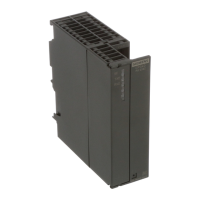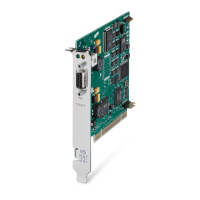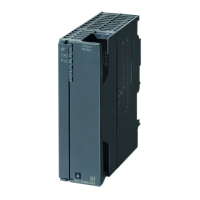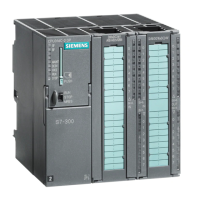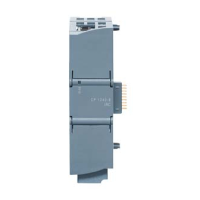Data Exchange Between the DP Master and AS-i Slave
50
DP/AS-Interface Link 20E
Release 11/2002
C79000-G8976-C138–04
Bits 3–0Byte Number *) Bits 7–4
m+21 Slave 10B Slave 11B
m+22 Slave 12B Slave 13B
m+23 Slave 14B Slave 15B
m+24 Slave 16B Slave 17B
m+25 Slave 18B Slave 19B
m+26 Slave 20B Slave 21B
m+27 Slave 22B Slave 23B
m+28 Slave 24B Slave 25B
m+29 Slave 26B Slave 27B
m+30 Slave 28B Slave 29B
m+31 Slave 30
Bit 3 | Bit 2 | Bit 1 | Bit 0
Slave 31B
Bit 3 | Bit 2 | Bit 1 | Bit 0
*)
m = start address of the input or output data on the DP master
**)
Bits 4–7 in the first byte of the input data are known as the status nibble; they are
reserved for the command interface of the DP/AS-i Link 20E (see Section 3.1).
Bits 4–7 in the first byte of the output data are also reserved and have no further
significance.
Masking I/O Addresses
I/O addresses that are not used in the lower part of the table can be masked
during DP configuration (for example in the STEP 7 configuration using the
“Reserved Length” parameter (see Section 1.9.3).
Example:
You are not using any B slaves as AS-i slaves with binary inputs and the highest
address of a standard slave is 20; this means that you can set the “Reserved
Length” of the input data to 11.
Special Feature of AS-i Analog Slaves
If you use AS-i analog slaves complying with profile 7.3 /7.4, the following applies:
S The input nibbles of these AS-i slaves are set to the value “0” by the DP/AS-i
Link 20E;
S The output nibbles of these AS-i slaves are ignored by the DP/AS-i Link 20E;
How to access AS-i analog slaves is described in Section 2.4.
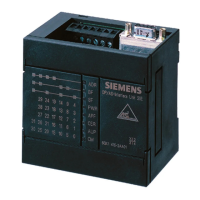
